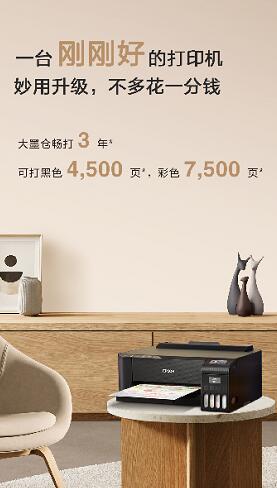2017中考一轮复习已经展开,为了帮助同学们更好的进行复习,下面是21世纪教育网为大家整理提供的2017中考英语知识点总结:形容词与复习考点分析,非常适合一轮基础复习使用,欢迎进入查看! 为了方便大家的学习与理解,21世纪教育网推出了2017中考必考知识点讲解微视频,30分钟,轻松掌握最新2017中考热门考点,点击以下图片或链接进入观看! 《《《2017中考英语知识点分类复习》》》 中考试题对形容词的考查涉及形容词原级、比较级和最高级的各种句型,形容词作定语的位置,易混淆的形容词用法辨析等。从考查形式看,一般有单项选择、完形填空、词语运用等。 一. 形容词:形容词主要用来修饰名词或代词,表示人或事物的性质、状态和特征的词。形容词在句中可用作表语、定语、补语等。 1.作定语,放在名词前, something, anything, nothing, everything等复合不定代词之后;形容词修饰疑问代词时,也须放在其后。 如:It’s a cold and windy day. Would you like something hot to drink? What else can you see? 你还能看见其它什么东西? 2.作表语,放在系动词之后。常见的系动词有be, become, get(变), turn(变), feel, look(看起来), seem, smell, sound, taste。如: He looks happy today. Silk feels soft. 绸子摸起来很软。 Milk is able to turn bad easily in summer. 3.作宾补,放在宾语之后 ★ keep/find/make/think+宾语+形容词(作宾补) We are making our country strong. 4. 形容词的排列顺序: 如:a big yellow Chinese wooden ship(一个黄色的大型中国木船) ★前置形容词(作定语)的顺序为: 限定描绘大长高,形状年龄和新老;颜色国籍跟材料,作用类别往后靠; ①“限定词”包括:冠词、物主代词、指示代词、或数词等。更多资料QQ378459309制作: ②表观点的 “描绘”性形容词如:beautiful、bad、interesting、great等。 ③“大长高”表示大小、长短、高低等一些词big,small, ,short, tall ④表示“形状”的词如:round, square等。 ⑤年龄,新旧,颜色的形容词young,old,new,white,red等 ⑥ “国籍”指一个国家或地区的词。Chinese,rural(乡村的) ⑦ “材料”的词如:wooden, woolen, stone,silk等。 ⑧“作用类别”的词如:medical, college,writing desk,police car等。 两个圆形的蓝色日本塑料盘 5、有关形容词的用法辨析: ⑴ whole与all:记住两个词序: ①the whole + 名词;如:He was busy the whole morning.(整个早晨他都很忙) ②all (of) the + 名词。 He can remember all the words he learns. ⑵ tall与high, short与low: ①指人的个子(树、楼)时用tall与short;如:He’s very tall/short.(他个子高/矮) Tall trees are standing on both sides of that avenue. ②指其他事物(含价格price时)一般用high与low。 A few people live on high mountains. ⑶ real与true: ①real一般指东西的真假,译为“真的” This is a real diamond and it’s very expensive. ②true指事情或消息的可靠性“真实的”--Is that true?—Yes. I heard it with my own ears. ⑷ interested与interesting的区别: ①interesting指人或东西“有趣的”,作定语或表语, 如:The man is very interesting and all the children like him. / This book is interesting and you can really enjoy yourself. ②interested则表示人对别的事物“感兴趣的”,只能作表语 I am interested in science. (excited/exciting; bored/boring等类似) (5)nice与fine:的区别:nice表示令人愉快的,可以指东西、人物外表等; 如:Let’s go and share the nice cake./ She is a nice girl.(漂亮的) 【good/well区别见资料】fine一般指身体或天气好 What a fine day!(多好的天气!)/ I am fine.我身体很好 (6)too much与much too: ①too much表示“太多的”,修饰不可数名词,表数量;如:I am full because I have had too much rice. ②much too表示“太”,修饰形容词或副词,表程度。 That coat is much too dear. (7) quick、fast与soon:quick与fast基本同义①quick常指反应速度快After a quick lunch, he hurried to school leaving his bag at home.②fast往往指运动速度快, A train is much faster than a bus. ③soon则表示时间上很快即将发生(将来时)。His father will be back to China very soon. (8)lonely与alone: ①lonely 有感情色彩的形容词,意思是:“孤独的,寂寞的;荒凉的”,作定语或表语 ②alone adj.“独自的,单独的”,客观情况,仅作表语,(作为副词的alone可作状语)。 如:He lives alone but he doesn’t feel lonely.(他一人独住,但是并不感到孤独)He is a lonely person. (9)sick与ill区别:①sick和ill都表示“生病的”,但是,sick可以做定语、表语,而ill只能做表语,如:He has been ill/sick for a long time and he is very weak now. Vets help treat sick pets and most of the pets’ owners like them. ②ill做定语意为“坏的”ill words坏话 二.副词 中考试题对副词的考查涉及常用副词的用法、副词等级的各种句型、易混淆的副词用法辨析等。 1. 副词的分类 副词按词汇意义可分为: 方式副词:well,fast,slowly,carefully,quickly 程度副词:very,much,enough,almost,rather,quite 地点副词:here,there,out,somewhere,abroad,home 时间副词:today,early,soon,now,then,recently 频度副词:always,often,usually,sometimes,seldom,never 否定副词:no,not,neither,nor 疑问副词:where,how,why 其他:also,too,only 2. 副词的基本用法: 副词是用来修饰动词、形容词、其他副词以及全句话,表示时间、地点、程度、方式等概念。如:We should listen to our teachers carefully. (修饰动词) He is very happy today. (表时间) “What happened?”I asked, rather angrily. (修饰adv./In spring,I can see flowers everywhere. (表地点) 3.副词的位置 ① 时间副词:一般放在句首或句尾,注意,early、late、before、later、yet等一般放在句尾,already、just一般放在动词的前面。I will do it omorrow. ②疑问副词:how , when, where, why放在句子的开头。如Where did he go yesterday? ③关系副词,连接副词放在所连接从句的开头I should like to know when the new term will begin? ④频度副词通常都放在动词前面,但若句子里面有情态动词,助动词或动词be,就放在这类动词的后面。例如: He often does this. / You must always bear this in mind. ⑤副词排列顺序 a)时间,地点副词,小单位在前,大单位在后 b)方式副词,短的在前,长的在后,并用and或but等连词连接。Please write slowly and carefully. c)多个不同副词排列:程度+地点+方式+时间副词。He worked very well here last week. 注意:副词very 可以修饰形容词,但不能直接修饰动词。改错: I very like English. ★4. 常见副词用法辨析 (1)already,yet与still的区别 ① already用于现在完成时态的肯定句句中,表示“已经”; He had already left when I called. ②yet用于现在完成时态的否定句句末,表示“还”,用于疑问句句末,表示“已经”。 Have you found your ruler yet?/ I haven’t finished my homework yet. ③still表事情还在进行He still works until late every night. (2)so与such的区别 ①so修饰形容词或副词;such 修饰名词。如: My brother runs so fast that I can’t follow him. / He is such a boy. 他是一个这样的孩子。 ②a)so修饰的结构是“so+形容词+a/an+可数名词单数”。 b)such修饰的结构是“such +a/an+形容词+可数名词单数”, c)“such+形容词+可数名词复数/不可数名词”。如 He is so clever a boy.=He is such a clever boy. (改错) It is so cold weather. They are so good students. ③如果可数名词复数前有many,few或不可数名词前有much,little修饰,用so不用such。如: so many(如此多的);so few(如此少的)可以加可数名词复数。 so much(如此多的);so little(如此少的)可以加不可数名词。 So time so people A so many B so few C so much D such little (3)also, too, as well与either 的区别 also,as well,too,用于肯定句,also常用于be动词,情态动词,助动词之后,行为动词之前;as well,too用于句末;either用于否定句中,置于句末。如: My father is a teacher. My mother is also a teacher. =My father is a teacher. My mother is a teacher as well. =My father is a teacher. My mother is a teacher,too. I can’t speak French, Jenny can’t speak French,either. (4)sometime, sometimes, some time与some times的区别 sometime 某一时间,某一时刻(可指将来时,也可指过去时) / sometimes 有时,不时的 some time 一段时间 / some times 几次,几倍 如:We’ll have a test sometime next month. 下个月的某一时间,我们要进行一次测试。 Sometimes we are busy and sometimes we are not. ( ) He stayed in Beijing for some time last year. ( )/ I have been to Beijing some times.( ) (5)ago与before的区别 ago表示以现在为起点的“以前”,常与一般过去时连用,不可以单独使用。 before指过去或将来的某时刻“以前”,也可泛指以前,常和完成时连用,可以单独使用。如: I saw him ten minutes ago. / He told me that he had seen the film before. (6)how 的几个短语: ①how often“多常,每隔多久”,用于一般时态,对表示频度的词语进行提问; ②how soon“多久以后”,常用于将来时态,对in引导的一段时间提问; ③how long“多久”用于过去时、完成时或其他时态,常对于for或since引导的时间状语提问; ④how many times“多少次”,用于过去时或完成时,对总计次数进行提问; ⑤how much“多少”,对程度进行提问,也可以对数量(不可数)或金钱进行提问。 ⑥how many”多少”对可数名词数量进行提问。⑦how far “多远”对距离进行提问 如: have you been like this?-For 2 days. / - does he wash his face? –Once a day. Will be come back?-In five minutes. / - is it from your home to your school? (7) hard与hardly的用法: ①hard作为副词意思是“努力地,猛烈地”, They study English very hard. ②hardly是否定词,意思是:“几乎不”,一般与情态动词can/could连用。 You can hardly see a person spit in a public place. (8) now,just与just now的区别 ①now:与一般现在时、现在进行时、现在完成时连用,意为“现在” ②just:与现在完成时连用,表示“刚……” ③just now:和过去时连用,表示“刚才” Where does he live______? / We have _______ seen the film.. / He was here______. 三.形容词,副词的比较级、最高级 1.规则变化 2. 不规则变化(1)(资料P98)不规则变化表更多资料QQ378459309制作: (2)下列单、双音节词只能加more和most 原级 比较级 最高级 like(相似的,同样的) more like most like real(真的) more real most real tired(疲乏的) more tired most tired pleased(高兴的) more pleased most pleased often(经常) more often most often ★四. 形容词,副词等级的用法 1. 原级的用法 (1)有very,quite,so,too, enough等修饰的词,用原级 如:He is too tired to walk on. (2) 肯定句中A…+ as+(adj./adv.的原级)+as +B A和B一样 否定句中 A…+not as(so) +(adj./adv.的原级)+as+B A 和B不一样 eg:Tom is as old as Kate./ Tom is twice as old as Kate. This room is not as/so (big) as that one. 这个房间不如那个大。 2. 比较级的用法 (1) A...+比较级+ than+ B A比B…(用比较级) Tom is taller than Kate. 汤姆比凯特高。 (2) 可以修饰比较级的词:much, a lot, far; a little,a bit; even; still,表程度It is much colder today than yesterday. (3)选择疑问句中,二选一时 Which is bigger,the earth or the moon? (4)用比较级表示最高级的意思 The Yangtze River is longer than any other river in China.在中国长江比其它任何一条河都长。 (5)“比较级+and+比较级”表示“越来越……” 如:He is getting taller and taller./ The flowers are more and more beautiful. (6)“the+比较级,the+比较级”表示“越……,就越……” 如:The more careful you are,the fewer mistakes you’ll make. (7)在比较级中为了避免重复,在than后常用one,that,those等词来替代前面提到过的名词。 如:The weather here is warmer than that in Shanghai. (8)表示倍数的比较:A...+倍数+than+B A是B的几倍。如:This room is three times bigger than that one. 3. 最高级的用法(用于三者及三者以上人或事物相比较) (1)形容词最高级前一定要用the,副词最高级前可省略。 (2)有范围(in, of, among或从句等)修饰的常用最高级。 This is the best film that I have ever seen. /Winter is the coldest season of the year. (3) one of the+形容词最高级+复数名词+(in/of短语)”表“…是…最…之一”。 如:Beijing is one of the largest cities in China 北京是中国最大城市之一。 (4)选择疑问句中用于三者或三者以上的比较。 如:Which country is the largest,China,Brazil or Canada? Which season do you like(the) best,spring,summer or autumn? (5)表示“第几个最……”时,用“the+序数词+最高级+名词单数”的结构。 如:The Yellow River is the second longest river in China. (5)形容词最高级前有物主代词,指示代词,名词所有格修饰时不能用定冠词。This is our best lesson today. 注意:注: 当相比较的两者属于同一范围/类别时,为了与自身相比较, 要用any other +单数名词. 若两者不属于同一范围/类别时,不必用other ,直接用any + 单数名词. He is taller than _____ boy in his class. He is taller than _____boy in our class . A.any B.any other Tags:2017,中考,英语,知识点,总结  |
21世纪教育网,面向全国的中小学学教师、家长交流平台





